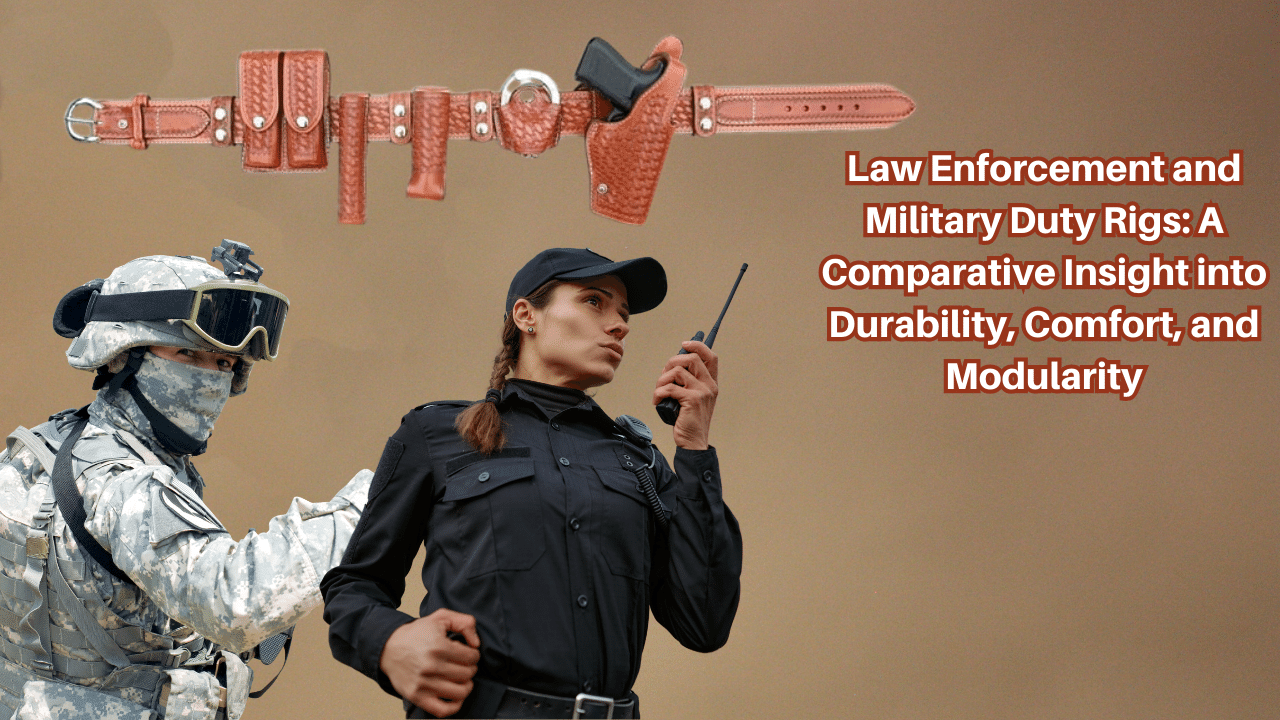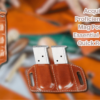Law Enforcement and Military Duty Rigs: A Comparative Insight into Durability, Comfort, and Modularity
Duty rigs form a vital part of the gear for both law enforcement officers and military personnel. Despite the similarities in their nature of work, there exist both stark similarities and differences in their duty rigs, primarily focusing on durability, comfort, and modularity. This article will offer an in-depth comparison between these two integral components of societal protection, highlighting the specificities of each.
Durability: A Non-Negotiable Requirement

Both law enforcement and military duty rigs demand unsurpassed durability due to the high-stakes environments they are used in. They must withstand extreme conditions, whether it’s the heat of a desert, the relentless downpour in a tropical jungle, or the rough and tumble action of urban confrontations.
However, the degree and type of durability required differ. Military duty rigs are designed for war zones, enduring not just harsh weather conditions but also heavy combat usage. They are constructed with high-grade materials and advanced technologies to resist damage and prolong service life. In contrast, law enforcement duty rigs are subjected to less intensive conditions and generally exhibit a shorter lifespan.
Comfort: Essential for Peak Performance
Comfort, while often underappreciated, is vital for both law enforcement and military personnel. Duty rigs, laden with requisite gear, can quickly become burdensome if not designed with user comfort in mind. A comfortable rig allows quick and easy movement, a crucial factor in high-pressure scenarios.
Military rigs tend to be heavier due to the extensive equipment they carry, which can compromise comfort. However, advanced design techniques nowadays focus on better weight distribution to minimize discomfort. Conversely, law enforcement duty rigs prioritize comfort to a greater extent. They are lighter, with a focus on ergonomics, ensuring officers can wear them for prolonged periods without discomfort.
Modularity: Adapting to the Mission

Modularity refers to the ability to modify the rig to suit different operational requirements. Both law enforcement and military duty rigs need a high degree of modularity for adaptability and versatility.
Military duty rigs, given the variable nature of military operations, require extensive modularity. They need to accommodate a wide variety of equipment, ranging from ammunition pouches to medical kits, depending on the mission specifics. On the other hand, law enforcement duty rigs have less modularity. They generally cater to standard police equipment, such as handcuffs, batons, and radios, with the occasional requirement for additional modules.
In conclusion, while both law enforcement and military duty rigs share the basic principles of durability, comfort, and modularity, their specifics are dictated by the unique demands of their respective fields. Military duty rigs are sturdy, adaptable, and designed for extreme conditions. Conversely, law enforcement duty rigs prioritize comfort for long hours of wear, with sufficient durability for urban environments and a moderate level of modularity. Understanding these differences and similarities is essential in choosing the right gear for the job.












